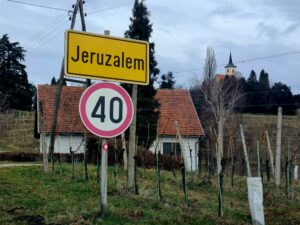Nagykanizsa (know to locals as simply Kanizsa) is a town in southwestern Hungary. It gets its name from the Slavic Kynsa, which translates as ‘belonging to a prince’. And once you get by the blocks of panel apartments and the myriad chain stores and supermarkets and make your way to the centre to Erzsébet tér (Elizabeth Square), it’s not difficult to let your imagination take over.
The town as we see it today was really quite ahead of its time. Some 150 years ago, a railroad connecting Kanizsa with the stalwarts of Vienna (Austria), Budapest, and Rijeka (Croatia) was laid, marking the town an important transport hub for cargo coming inland from the coast. The banks followed suit and just before the century turn, a long-distance telephone system was in place and a 70-bed hospital opened. The First World War turned out to be a double-edged sword. On the plus side, when the military barracks opened, the town got a municipal water network and paved roads. But the War also cut it off from markets to the south and east, choking it economically. Were it not for its oil, it could well have died. [I’ve heard Zala County referred to as the Texas of Hungary… minus the stetsons and the spurs, of course.] And another piece of trivia for you – the town is home to Tungsram Plc, one of the world’s largest light-bulb manufacturers. Who’d have thought it?
I visit regularly but rarely take the time to do anything but the specific errands I came for – a general shop, a car service, or a visit to the superb Sunday flea market. Today, though, I found myself with a couple of hours to kill while the car was in for a service. [Note: If you live in the vicinity and struggle with the language, ask for Gábor at Pápai Jozsef és Társa. He speaks English, German, and Hungarian. Great, too, if you have a problem while on holidays.]
I wandered down to the main square in search of a café where I could plonk myself for a while, have breakfast, and do some work. I sat at the first one I saw – KNYSA Kitchen and Bar – and wow, was I surprised.

Okay – so I’m a tad judgemental. I’ve been through my fair share of Hungarian towns and villages and sipped more coffees that I care to remember in various presszós, kocsmas, and kévézós. I have a fair grip on my expectations. Nagykanizsa and cosmopolitan are not two words I’d use in the same sentence and yes, that could well be a failing on my part. But the bods at KNYSA seem determined to change my mind.
I ordered coffee and eggs benedict. My search for decent eggs benedict is just as diligent as my search for a decent cosmopolitan – both are difficult to find. I know. I’ve devoted many years to the task. I was very ably served by a young man by the name of Marcell who was helpful without being obtrusive, friendly without being saccharine, and efficient to the point I wondered where he’d been trained. Impressive stuff. The eggs, when they came, were interesting – in a good way. The presentation was up there with the best of the best restaurants I’ve eaten in, but the Hollandaise sauce was cold. As in cold, cold. And it was surprisingly good. Tangy and fresh. The muffins were crisp and the more traditional bacon was substituted by either toasted pancetta or prosciutto – I couldn’t tell which. A garnish of sun-dried tomatoes added a final touch to what was the best eggs benedict I’ve tasted in a long while.

Inside, the decor was tastefully done – I was particularly taken with the striped black-and-white tiling in the bathrooms. Breakfast runs from 8 till 10:30. Lunch presumably starts about 11 and from what I read (although I didn’t see a menu), they include Napelese pizza in their offer. And if that’s not enough to make me want to come back, they’re advertising a champagne bar with a Mediterranean feel open till 10 pm Sunday to Thursday and till midnight on Friday and Saturday. I bet they make a mean cosmopolitan.
I sat outside, looking out on Erzsébet tér, taking the time to enjoy the stateliness of it all. It really is a little gem. There is a depth of history to Nagykanizsa that warrants further exploration. I’m sure more research into the buildings surrounding this square alone would yield some fascinating stories. And given that I now have someplace to sit, with good coffee, great eggs, and a wifi connection – I’m happy to volunteer.
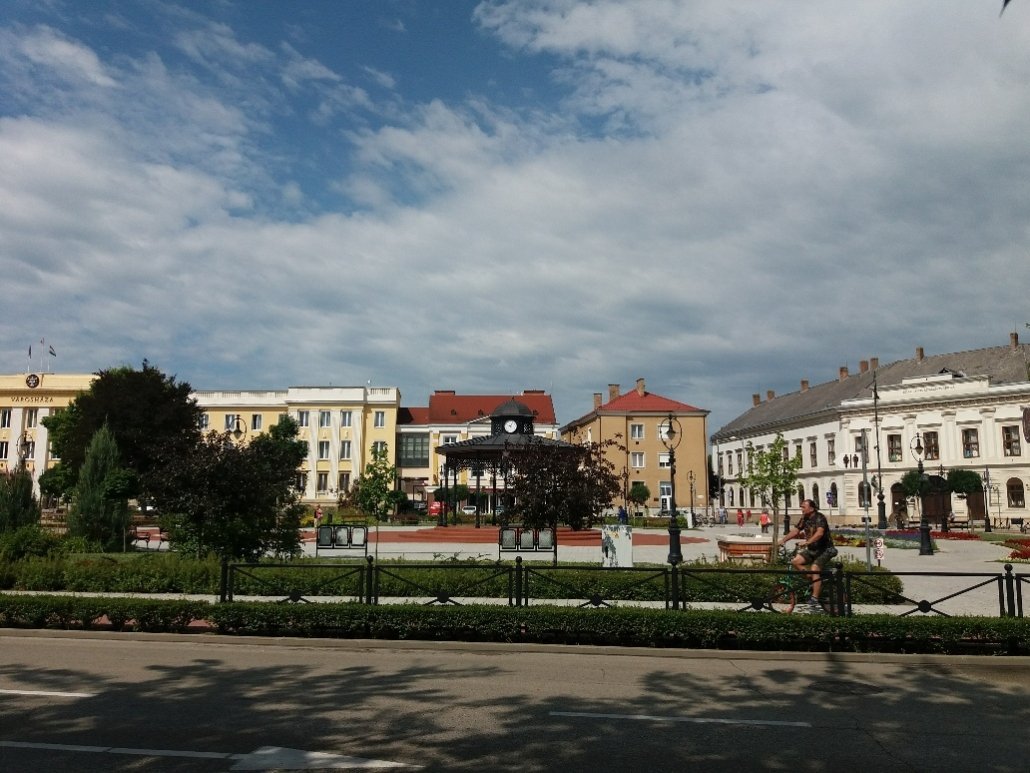
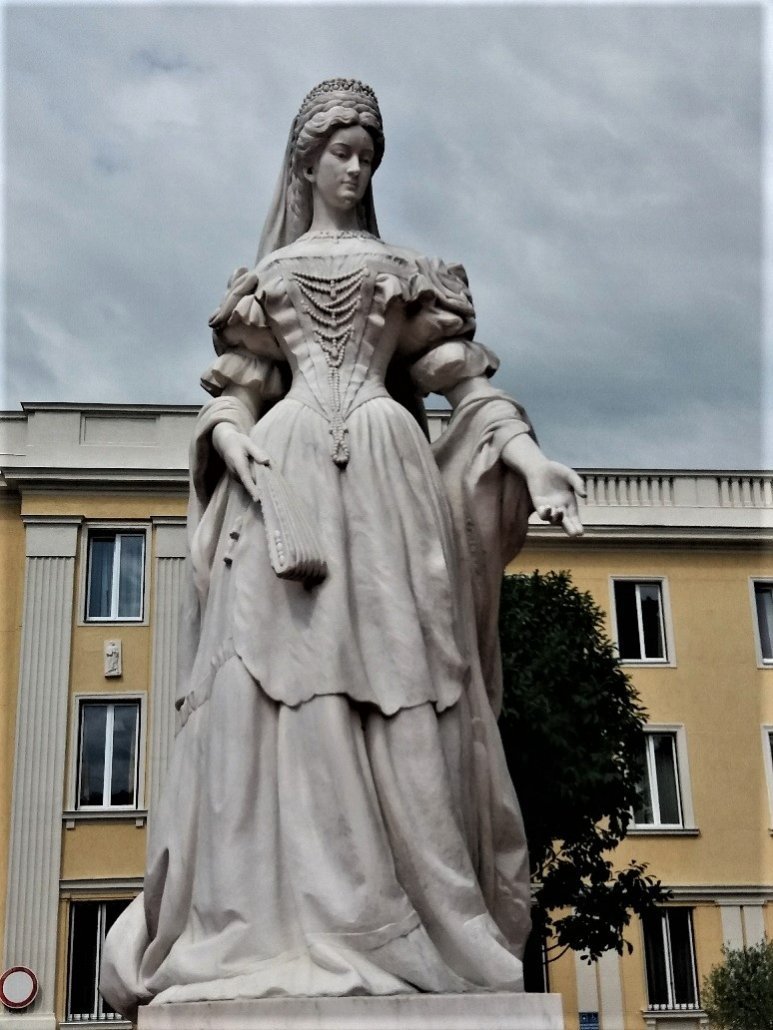

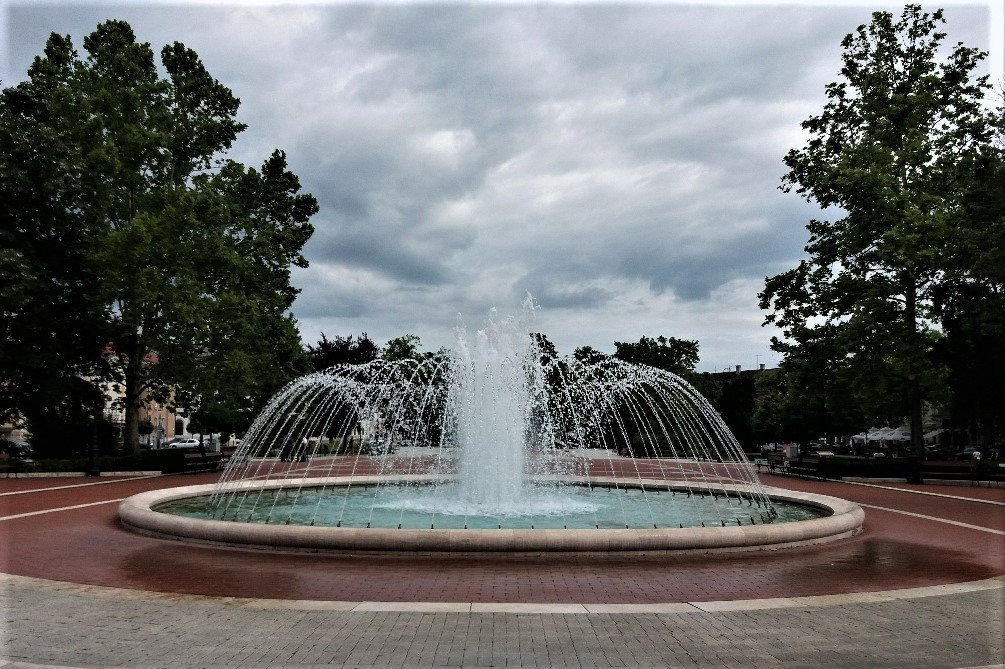
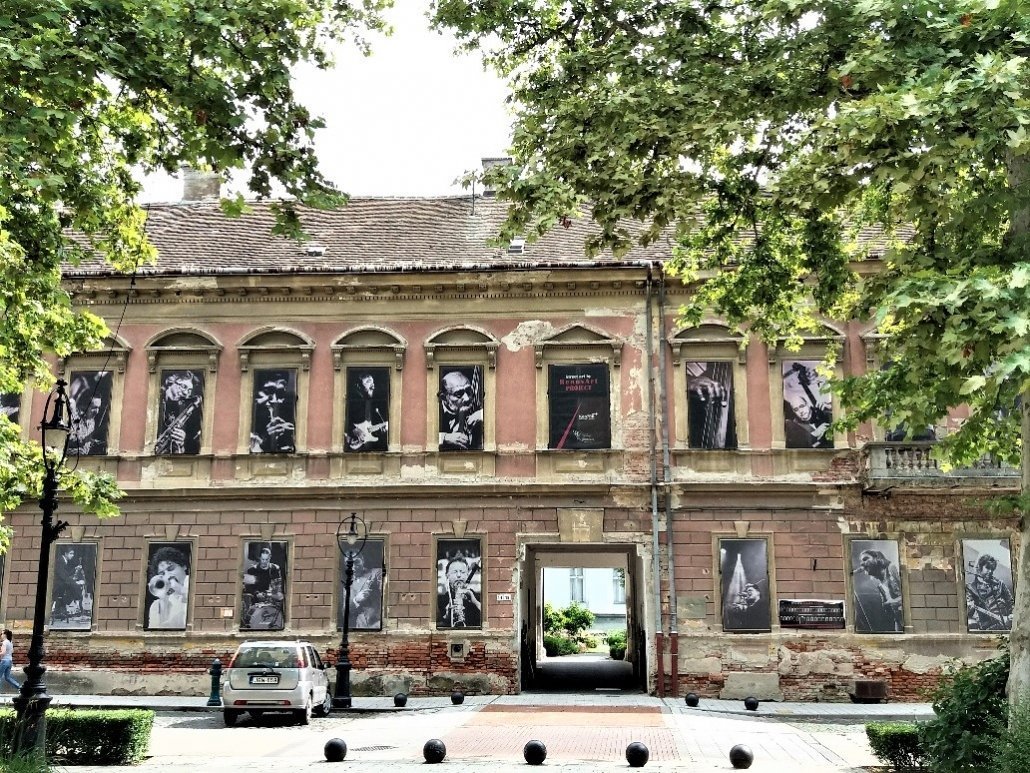
Take the Poster House as a case in point. I’ve long been fascinated by the frontage of this former granary. I came across a very detailed history of the building (and others on the square) of which Google makes a passable translation. It was here, in 1945, on 1 April, at 5 am, when the first Soviet tank entered the square, a 39-year-old Captain shot his 33-year-old wife and then killed himself. There has to be a story there.

My vote for most intriguing statue goes to this one by Péter Párkányi, showing a man on a bike leaning on a drinking fountain. On the spokes of the wheels, the names of various towns and cities – Nagykanizsa’s twins in Russia, China, Romania, Slovenia, Finland and Austrian – are engraved. Definitely different.
If you’re in the vicinity, it’s worth stopping by. If you make it by 10.30, try the eggs benedict. And if you get to the bar before I do, have a cosmo for me and let me know if it’s worth travelling for.



